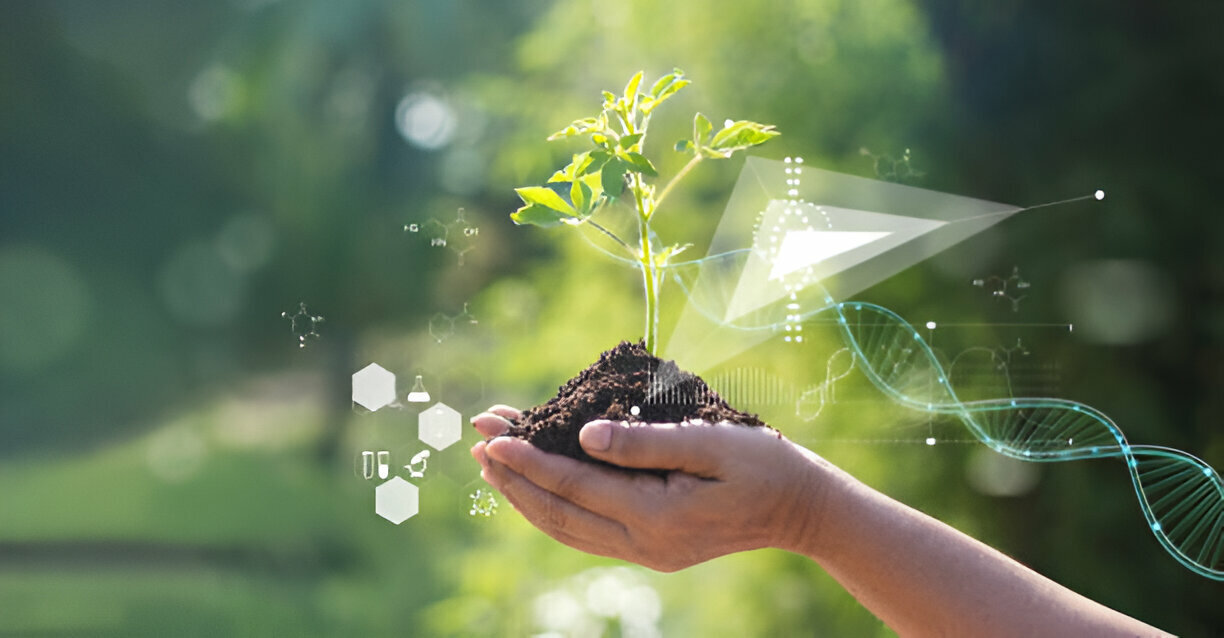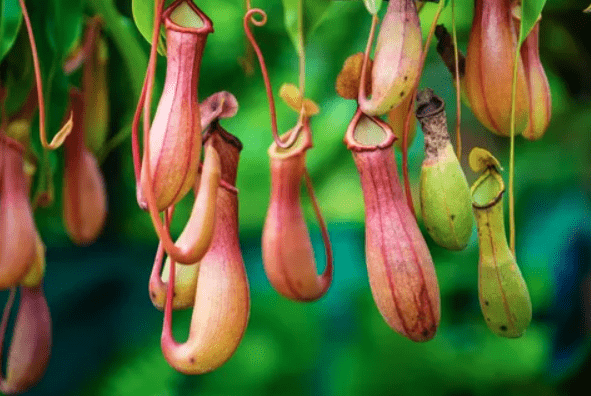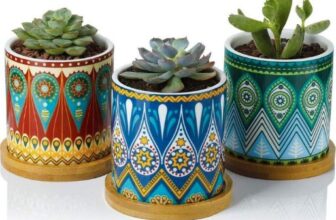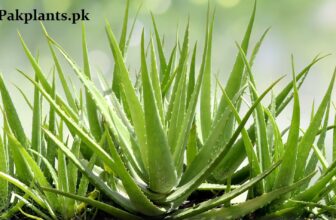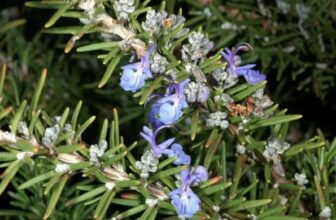Lavender species are a frequent sight in herb gardens due to their aromatic leaves and alluring blossoms. These plants are extensively grown for their essential oils, which find application in adding fragrance to a diverse range of products. Oil extracted from them have extensive historical usage in the realm of herbal medicine.
From where the name of the lavender come from?
The name “lavender” is derived from its Latin root “lavare,” meaning “to wash.” This nomenclature is because lavender was historically employed in bathing rituals to cleanse both the body and the spirit. In later eras, lavender gained popularity as an additive for baths in various regions, such as ancient Persia, Greece, and Rome, where it was believed to have purifying properties for both the physical and mental well-being.
- The ancient Egyptians, in their embalming practices, incorporated lavender. They would enshroud the deceased in cloths soaked in lavender-infused water.
- Going as far back as A.D. 77, the Romans are recorded to have utilized lavender as a means to repel insects and alleviate insect bites.
Grow lavender in your Garden

Throughout history, lavender has been employed to alleviate symptoms and provide assistance for a variety of ailments. Contemporary scientific research has validated many of its health advantages, while some remain subjects of ongoing investigation.
Insomnia: Lavender was historically recommended for individuals suffering from insomnia or other sleep-related issues. People used to stuff their pillows with lavender flowers to aid in falling asleep and enjoying a more restful night.
Hair Loss: The topical application of lavender oil may be beneficial in addressing alopecia.
Headaches and Migraines: The calming properties of lavender may be sufficient to alleviate headaches and migraines.
Chemotherapy Side Effects: Aromatherapy, according to the National Cancer Institute, can assist individuals with cancer in managing the adverse effects of their treatments. Lavender aromatherapy could help reduce anxiety associated with cancer treatments.
Depression and Anxiety: Lavender may offer support for individuals dealing with anxiety and depression, although ongoing research shows promise in this area.
Acne: In comparison to more aggressive treatments, lavender oil may serve as a gentler approach to acne treatment due to its bacteria-fighting capabilities.
Burns: Lavender has a longstanding history as a traditional remedy for burns, and its antimicrobial properties may also aid in preventing infections after a burn.
Skin Conditions: Lavender contains two inflammation-fighting compounds known as linalool and linalyl acetate. These compounds are believed to offer relief for various skin issues, including rashes, eczema, dermatitis, psoriasis, and itching.
Wound Healing: Lavender’s soothing qualities may extend to the healing of injured skin. It’s important to conduct a patch test and use a carrier oil when applying lavender essential oil directly to the skin.
Garden: Gardeners often strategically plant lavender bushes around vegetable gardens because they are excellent for attracting honeybees, butterflies, and other pollinators. This purple flower is also a common addition to wildlife gardens, where it attracts wasps and hornets with its vibrant activity.
Caution
- As stated by the National Center for Complementary and Integrative Health, it’s generally considered safe to enjoy lavender in the typical amounts used in foods.
- However, ingesting lavender essential oil is not advisable. Essential oils can be toxic, and lavender oil may lead to discomfort. Never ingest lavender oil directly.
- Some individuals may experience allergic reactions when using lavender oil on their skin. It’s recommended to always employ a carrier oil and conduct a patch test before applying lavender to your skin.
Grow Lavender in you Home Garden
Lavender is classified as a shrub, indicating that it develops into a small to medium-sized woody plant. These shrubs are renowned for their enduring nature and can flourish in a variety of climates and regions. Lavender has the ability to thrive for many years, demanding minimal maintenance over its lifespan.
Lavender exhibits robust growth in a wide range of soil conditions but should have effective drainage. To enhance drainage of compacted or clayey soil add compost or well-aged manure.
For optimal growth, it is recommended to plant lavender in a location that receives a minimum of 6 to 8 hours of sunlight each day.
Conditions are Required to Grow Lavender
The ideal time to cultivate lavender is during the spring, specifically from March to May, when the soil is beginning to warm up.
However, if you opt to plant lavender in the fall. Select larger, well-established plants to enhance their chances of surviving the winter months.
Grow New Lavender From Parent plant
Select the Right Time: Cut the cuttings from the lavender plant after it has bloomed. Choose side-shoots for cuttings that do not have buds.
Prepare the Cuttings: a. Cut the side-shoots low near the root, ensuring you obtain several inches of stem. b. Gently use a knife to scrape the skin off the bottom portion of the stem on one side. c. Remove the foliage from the bottom 2 inches of the stem.
Prepare the Pot: Fill a small pot, approximately 4 inches in size, with potting mix. Optionally, you can dip each cutting in rooting hormone before planting.
Plant the Cuttings: Insert the prepared bare stem into the potting soil and firmly press the soil around it. Water the soil gently. To create a humid environment, cover the entire pot with clear plastic or a polythene bag.
Provide Proper Conditions: Place the pots in a warm, shaded area.
Root Development: Allow approximately 3 weeks for the roots to develop. To check if the roots have taken hold, gently tug on the stem; it should remain in place. After this period, you can remove the plastic bag.
Watering and Feeding: Water the cutting when the top inch of soil becomes dry. Additionally, feed it with a 1/4-strength liquid plant fertilizer once a week.
Transplanting: After a few weeks, when the cutting has established itself, transplant it into a larger pot to provide more room for growth.
By following these steps, you can successfully propagate new lavender plants from cuttings.
Some Helpful Tips To Grow Lavender
Growing lavender can be a bit challenging from seed, so we recommend the following methods for successful cultivation:
Choose Starter Plants: It’s often easier to start with small starter plants from a garden nursery.
Softwood Cuttings: Alternatively, you can take softwood cuttings from an existing lavender plant. This method is more reliable for propagation.
Seed Considerations: If you decide to grow from seeds, be aware that they may take up to three months to germinate, and in cooler climates, seedlings must be overwintered indoors for their protection.
Spacing: When planting lavender, ensure a spacing of 2 to 3 feet between plants to allow for proper air circulation.
Mulching: Add mulch around the plants to keep weeds at bay. However, be sure to keep the mulch away from the crown of the lavender plant to prevent moisture-related issues.
Pruning: For established plants, consider pruning in spring when you notice green leaves emerging from the base. Removing about one-third of the top growth will help maintain the plant’s shape and prevent it from becoming leggy and bare at the base. Avoid cutting into old wood, as it won’t regrow.
How To Harvest And Store Lavender?
Optimal Harvest Time: Harvest lavender in the morning when the aromatic oils are most concentrated.
Cutting Stems: Snip off the stems when approximately half of the flower buds have opened. Cut the stems as long as possible for ease of handling.
Bundle Preparation: Gather the harvested lavender stems into bundles and secure them with rubber bands.
Drying Process: To dry the lavender, hang these bundles in a sheltered, cool, and dark location with good air circulation.
Drying Duration: After a few weeks, the lavender flowers will have completely dried. At this point, you can gently shake them from the stems into a lidded jar.
Storage: Store the dried lavender flowers in a cool, dark place to preserve their fragrance and quality.
How To Make Lavender Oil At Home
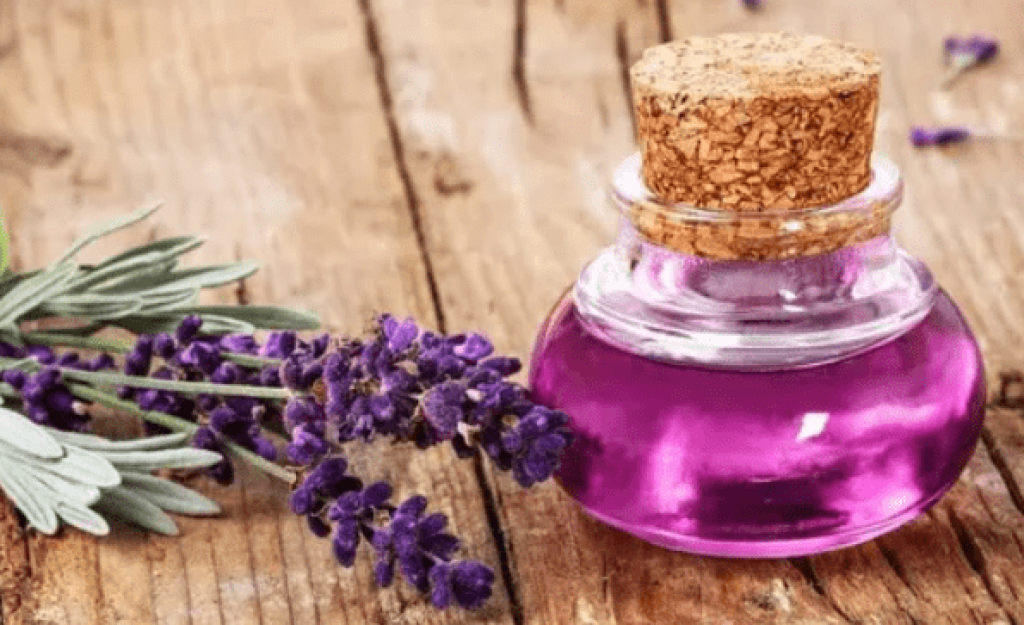
Fill a glass container with dried lavender flowers or buds, ensuring it’s at least ¾ full.
Pour your choice of carrier oil over the dried lavender, making sure the flowers are fully submerged and can move freely within the oil. Seal the container with a tight-fitting lid. Some people prefer using a blend of two oils, like almond oil and olive oil.
Place the jar in a warm, sunny location to infuse for a minimum of one week, but you can leave it for up to three weeks. If possible, put it in a spot you’ll remember to visit and shake occasionally. Lavender flowers tend to float in the oil, so lightly turn and shake the jar to keep the mixture well combined. This is especially important in the first few days. A sunny windowsill works well for this solar infusion method, but avoid excessive heating of the oil.
Stain After the infusion period, strain the lavender flowers and collect the oil using cheesecloth or a reusable nut milk bag. This allows you to squeeze out every bit of oil. Keep in mind that homemade lavender-infused oil won’t be as concentrated as essential oils.
How to make Lavender syrep
Combine Ingredients: In a medium saucepan, combine water, sweetener, and dried lavender.
Boil and Simmer: Bring the mixture to a boil and then reduce the heat to a simmer. Let it cook on low for approximately 5 minutes, stirring to ensure the sugar dissolves completely.
Thickening and Cooling: Once the syrup has thickened to your desired consistency, remove it from the heat and allow it to cool.
Strain: To remove the lavender, strain the syrup by passing the liquid through a fine mesh strainer.
Storage: Transfer the strained syrup into an airtight container for storage.
Some Famous Types Of Lavender That you Could Grow in Your Garden
Here are approximately 30 different species. One of the most commonly cultivated varieties is Lavandula angustifolia, also known as English lavender.
English lavender
English lavender comes in numerous cultivars with various colors and sizes. Some popular cultivars include:
- ‘Munstead’: Features violet-blue flowers / dark green foliage.
- ‘Hidcote’: deep purple flowers /silver-gray foliage.
- ‘Miss Katherine’ deep pink flowers /aromatic foliage.
Lavandins
Lavandins is hybrids of English and Portuguese lavender (L. latifolia). These are generally larger plants that typically bloom once a year, later in the summer. Some notable varieties include:
- ‘Phenomenal’: A vigorous variety highly tolerant of heat and humidity, resistant to common root and foliar diseases, and produces long flower spikes.
- ‘Provence’: Another vigorous variety with long stems and a very fragrant aroma.
Spanish lavender
Spanish lavender (L. stoechas) and French (fringed) lavender (L. dentata)
